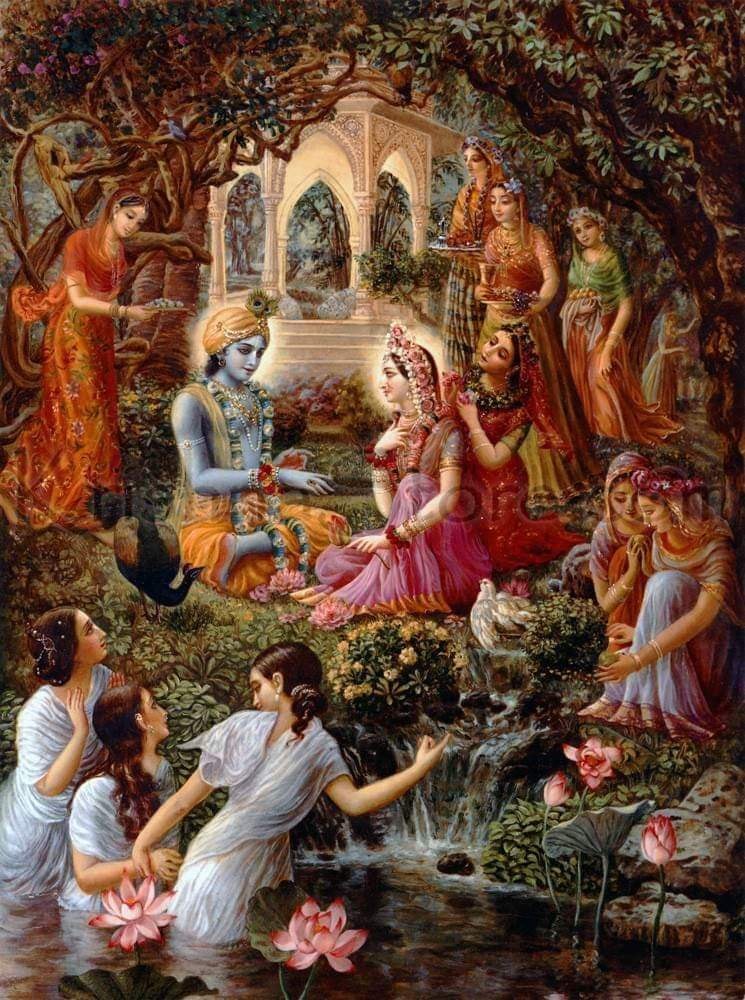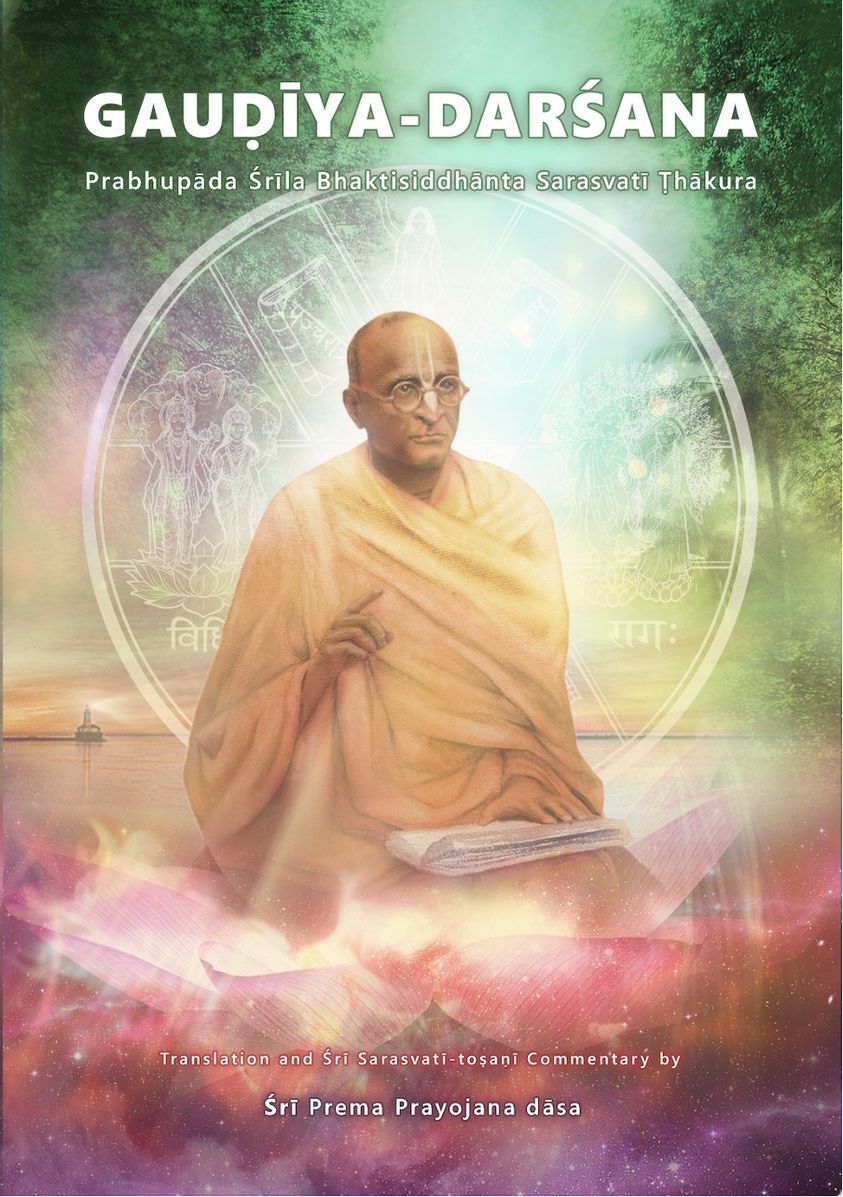From Srila Bhaktivedanta Narayana Maharajas Bhagavad Gita Chapter 5 Texts 3-4
![srilagurudeva1[1]](http://www.harekrishnasociety.com/wp-content/uploads/2012/04/srilagurudeva11-150x150.jpg)
Srila Bhaktivedanta Narayana Maharaja
Text 3
O Maha-baho, he who neither hates nor desires anything is always worthy to be known as a sannyasi, because one who is free from the dualities of aversion and attachment easily becomes liberated from the bondage of this material world.
SARARTHA-VARShINI
It is possible to achieve the liberation which is attained by sannyasa without entering the sannyasa order. For this purpose, Sri Bhagavan is speaking this sloka beginning with jneyah. O Maha-baho, you should understand that a purehearted
nishkama-karma-yogi is always a sannyasi.The address O Maha-baho implies that one who is able to conquer the realm of mukti is certainly a great hero (maha-vira).
SARARTHA-VARShINI PRAKASIKA-VRiTTI
This sloka establishes why nishkama-karma-yoga is superior. Due to the purity of his heart, a nishkama-karma-yogi is called a fixed renunciate (nitya-sannyasi). Although he has not accepted the dress of a sannyasi, he remains blissfully absorbed in bhagavat-seva by offering himself and all sense objects at Bhagavans lotus feet. Detached from sense enjoyment and without any desire for the fruits of his actions, he remains free from attachment and envy. Thus he is easily liberated from bondage to the material world.
Text 4
Only the ignorant say that sankhya (karma-sannyasa) and nishkama-karma-yoga are different. The wise reject such opinions. By following either path correctly, one attains the result of both in the form of moksha.
SARARTHA-VARShINI
O Arjuna, you have asked which of these two is superior, but this is not actually a question at all; the wise see no difference between them. For this purpose Sri Bhagavan is speaking this sloka beginning with sankhya. Here, sankhya, which means jnana-nishtha (being fixed on the level of jnana), indicates one of its limbs, sannyasa. Only children or fools say that sannyasa is different from nishkama-karma-yoga. The wise do not think like this. This has been described in the previous sloka: jneyah sa nitya-sannyasi (Gita 5.3). Thus, by taking shelter of either, the result of both is attained.
![writing-3[1]](http://www.harekrishnasociety.com/wp-content/uploads/2012/04/writing-31-150x150.jpg)
SARARTHA-VARShINI PRAKASIKA-VRiTTI
When the heart becomes purified by properly engaging in nishkama-karma-yoga, jnana appears, after which one eventually achieves liberation (moksha). This is also the fundamental purpose of karma-sannyasa. Since the end result of both nishkama-karma-yoga and karma-sannyasa is mukti they are non-different. By following one of them, the result of both is achieved. Although externally pravritti (the directions for enjoying the material world according to the regulative principles) appears to be different from nivritti (the directions for giving up the materal world for higher spiritual understanding), the wise do not see a difference between them, since the result of both these processes is the same.

![Guruliterature[1]](http://www.harekrishnasociety.com/wp-content/uploads/2012/04/Guruliterature1-150x150.jpg)
![SrilaGurudevGarland1[1]](http://www.harekrishnasociety.com/wp-content/uploads/2012/04/SrilaGurudevGarland11-150x150.jpg)
![gurudeva[1]](http://www.harekrishnasociety.com/wp-content/uploads/2012/04/gurudeva1-150x150.jpg)









